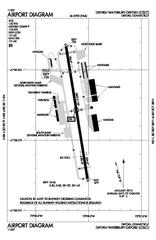
Cours d’anglais aéronautique sur FCL ANGLAIS
Warning – This voice communication does not comply with the International Civil Aviation Organization’s (ICAO) recommendations. However, you can click off, and listen without reading the script on this video in order to jot down this radio communication for listening training purpose:

Click on the map above to enlarge. (U.S. Department of Transportation, Federal Aviation Administration courtesy via Wikimedia)
These things happen.
- Bearing reported with a ninety-degree error, then corrected;
- Uncertainty of the downwind leg;
- Traffic not in sight;
- Uncertainty as to which airport is in sight;
- Requests are said again;
- Another airport in the vicinity with same runway configuration;
- Traffic off course;
- Within half a mile, no traffic in sight, and no radar tracking;
- Pilot cannot hear at times or does not reply;
- Confusion between ident and squawk;
- Pilot does not know how to use the transponder;
- Uncertainty of the type of aircraft, then corrected.
Landings may be difficult at times, indeed…

